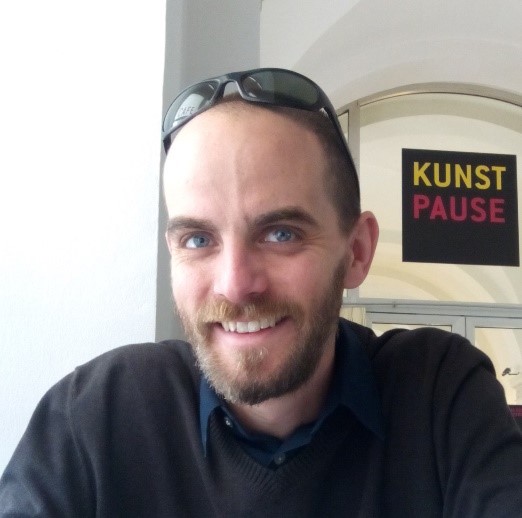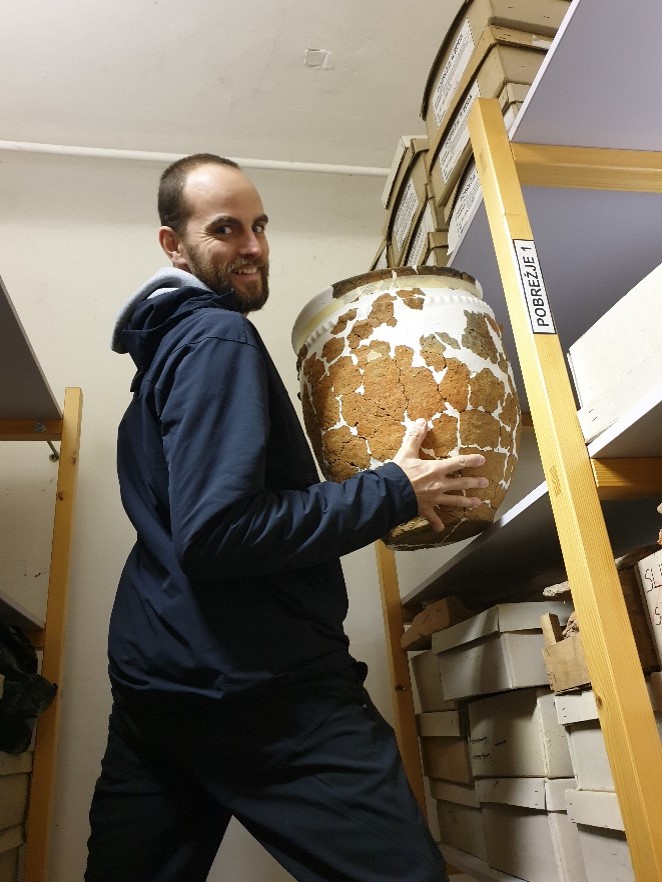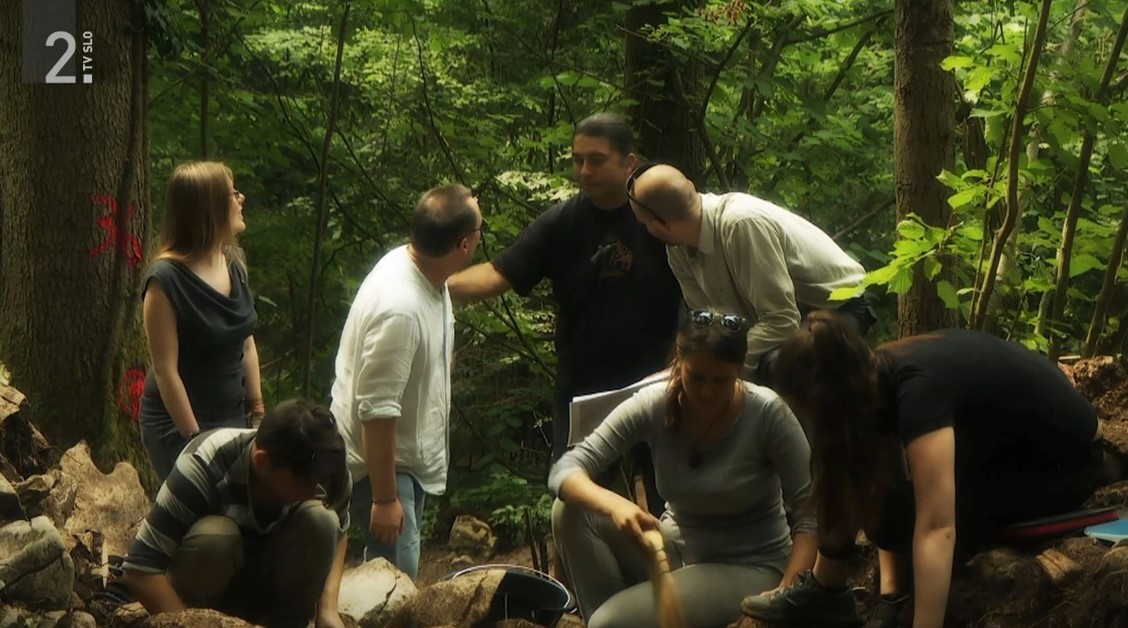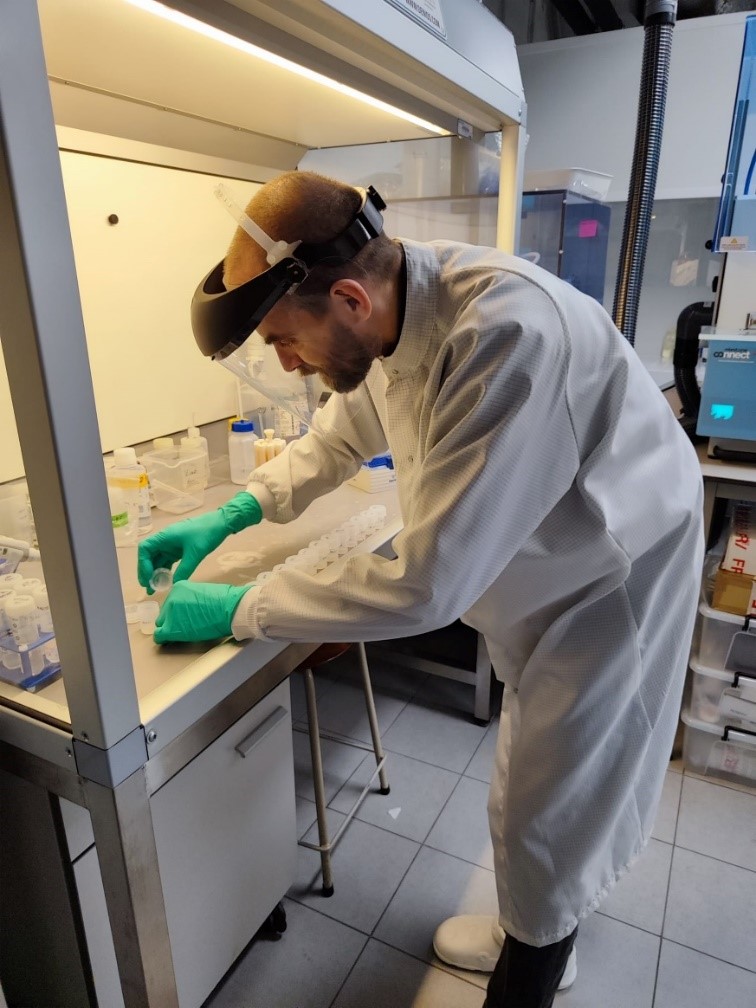Matija Črešnar
Nationality: Slovenian
Institution: University of Ljubljana, Faculty of Arts, Department of Archaeology, Centre for Interdisciplinary Research in Archaeology (CIRA), Slovenia
Position: Assoc. Prof., head of CIRA
Position in the EAA: Nomination Committee member
EAA Member since: 2011
 Image above courtesy of M. Črešnar
Image above courtesy of M. Črešnar
TEA: Why do you do archaeology/How did you decide to do it?
M. Črešnar: My story might sound a bit boring… or maybe not! I was already fascinated by archaeology back in high school, especially after visiting places like Rome and sites such as Herculaneum and Pompeii. That is also when I went on my very first dig—at the prehistoric cemetery of Kapiteljska njiva in Novo mesto (SE Slovenia). There were hundreds of graves, beautifully decorated ceramic vessels, helmets, bucket-shaped situlae… That was it. I was sold!
I still remember one of those early days: I was that skinny kid they picked for a kind of initiation ritual—tasked with emptying a Hallstatt-period grave that was over two meters deep. Apparently, I passed the test, because they let me stay. And I did!
What makes me even happier is that, after all these years, we are still collaborating with the Dolenjska Museum in Novo mesto. In fact, we are now analyzing material from the very same graves I helped excavate nearly 30 years ago—only now we use some of the most advanced isotope analysis techniques, together with our project partner at Vrije Universiteit Brussel. And we are getting entirely new insights into the communities buried there.
That is why I came to archaeology—and also why I stayed. What could be more exciting than studying old things with ever-evolving new tools (or—let’s be honest—new toys!)?

Črešnar with local LBA material at the IPCHS depot, courtesy of M. Črešnar
TEA: What is the most important and relevant part of your work?
M. Črešnar: Ooof… all of it! Otherwise, I would not be doing it. Of course, the levels of importance and relevance vary.
At the University of Ljubljana, our primary focus is to pass on our knowledge to the next generation of archaeologists—those who will shape the future of our discipline. In a small country like Slovenia, where we are the only faculty offering a truly holistic education in archaeology, this is not just a key responsibility, but also a significant privilege…especially in a field that is evolving so rapidly.
As a research-oriented university, we also place a strong emphasis on scientific work. Our Department of Archaeology is well connected within both the Slovenian and broader European research landscapes, through our own research group and the Centre for Interdisciplinary Research in Archaeology (CIRA). Our projects allow us to uncover new insights into the past, but this can only happen if we continue to build our capacity: by involving new researchers, developing fresh expertise, and, ideally, acquiring new infrastructure.
In that regard, I should also mention our involvement in the E-RIHS network, particularly through the Slovenian node. It is a key platform in heritage science, and much of the archaeological materials research in Slovenia is now taking place through it. I am not sure how actively archaeologists in other countries are engaged with E-RIHS, but I would definitely recommend knocking on their doors.
This also ties into my own background in heritage protection. Having spent over a decade partly working within the national heritage protection service (the IPCHS), I am always looking for ways not only to study heritage, but also to manage and promote it. A good example is our Iron Age Danube Route—a Council of Europe-certified cultural route which brings archaeological knowledge into the public sphere in a meaningful and accessible way.
And finally—if we want archaeology to remain relevant—we need to choose research topics that speak to wider societal concerns, both today and in the future. That is why many of our current and upcoming projects, such as CRIME and MATRES, focus on environmental and social changes. These are issues we believe can help archaeology take a more visible and impactful position within the scientific community.

Črešnar together with colleagues Armit, Büster, Potrebica and UL students taking part in the “Forensiki želenze dobe” (“Iron Age Forensics”) RTV Slovenia television documentary, image courtesy of RTV Slovenia
TEA: Describe your workspace in five words or less
M. Črešnar: Constructive chaos – always on my desk, usually on my desktop and often also in my head (but with classical music on, I can at least try to harmonize it a bit).
TEA: Any advice to new archaeologists just starting out?
M. Črešnar: Above all, I truly hope that they are passionate and enthusiastic about archaeology! If that is the case, every step forward becomes so much easier. Of course, we cannot live on passion and enthusiasm alone—but archaeology has so much to contribute to today’s world.
The knowledge and skills taught in archaeological departments across Europe are highly applicable. The field is expanding more than ever, reaching into national spatial planning, cultural tourism, heritage science, creative industries—and even space exploration.
It is hard to keep up, even for insiders, so I cannot help but feel optimistic for the younger generation!
TEA: Does archaeology have relevance to current events? If yes, how?
M. Črešnar: Although an integral part of the humanities, archaeology was not seen as a real scientific discipline and was perceived more as storytelling until very recently. That is (hopefully everywhere) finally changing. We are being listened to, and we must make ourselves visible, as our field holds the largest unexplored diachronic dataset of all humanity.
This dataset also encompasses countless challenges that humanity is facing today, whether it is climate change and other environmental events, or issues related to migration, wars, and broader social scenarios. Therefore, yes! Archaeology is relevant for both today and tomorrow!
However, it is also up to us to ensure that we are seen, heard, and accepted as relevant. If we do not perceive ourselves this way, no one else will do it for us.

Črešnar in the BB Lab in Brussels, learning the basics of sample preparation for isotope analysis. Photo by C. Gerritzen (VUB).
TEA: Was archaeology always your dream job? What else did you consider? Why did you end up choosing archaeology in the end?
M. Črešnar: From an early age, I was surrounded by both science and the arts—my mother being a biochemist, and my father an art historian. Those two worlds were always present: in our conversations, in our everyday lives, and even in the objects around us. Naturally, I fell in love with both. And where better to combine them than in archaeology—a discipline that sits right at the intersection of so many fields?
Now, more than ever, archaeology is opening up entirely new pathways—ones we could not have even imagined when I first entered the field about 20 years ago. As someone who gets excited easily (maybe too easily!), I truly feel I am in the right place at the right time. And I am genuinely looking forward to what the future holds for archaeology—and what archaeology can, in turn, offer to the future.
TEA: Anything else you want to add?
M. Črešnar: As a current member of the Nomination Committee of the EAA, I also want to highlight just how important it is for our members to be active. And by active, I do not just mean attending events—I mean bringing your ideas to the table and getting involved in shaping the EAA. Because the EAA is its members. It is built on their energy, their ideas, and their contributions.
Our most recent meetings have shown just how big and diverse our community is—members from across so many countries, institutions, and subfields. With that kind of collective strength, there is so much we can achieve together.
As the Nomination Committee, we are always on the lookout for new candidates to join the various bodies of the EAA. So, if you—yes, you—reading this, think you have something to contribute, do not hesitate to reach out to us at NomCom@e-a-a.org. We’d love to hear from you!
Go back to top